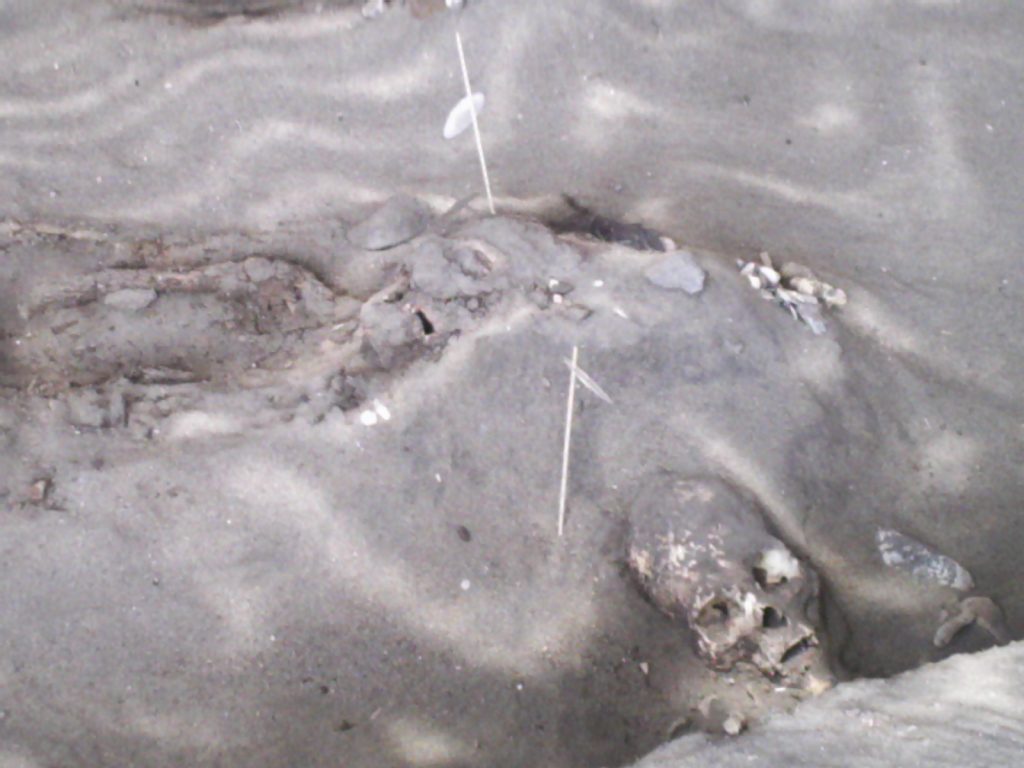When people hear the word mummy, most will think of the pharaohs found in tombs in Egypt. While they are the most well known, what many people may not realize is that the process of mummification has existed long before the Egyptians began doing it. Mummies, which scholars believe to be the oldest, even before recorded history, have been located in Chile, and are said to have belonged to an ancient people known as the Chinchorro.
What exactly is a mummy? A mummy is defined as “dead human or animal body [from ancient times] preserved by embalming or by unusual natural conditions.”1 Many of the areas in which mummies have been recovered all share one similar trait; each is known for extremely hot and dry weather. These climates cause the body to dry up and slow down the decomposition process.2

The oldest mummies belong to a people now referred to as the Chinchorro, who are believed to have lived between 8,000 BCE and 500 BCE. Evidence suggests that their practice of mummification predates Egyptian mummies by as many as two thousand years.3 The Chinchorro lived in the Atacama Desert, which is located in Southern Peru in Chile. They are believed to have been fisherman, living along the coast.4
Mummification was a complicated process. All organs, including the heart, eyes, and lungs were removed, followed by the skin. The body was then dried of fluids and stuffed with sticks, plant fibers, and straw. The body was disassembled by removing the bones and organs, and dried of all liquids. The body was then covered with black clay used to mold a new face, as the bones were put back into the body, along with sticks, clay, and plant fibers. A clay mask was made and placed over the skull, and the rest of the body was coated in Manganese paint, to give it a red color.5

Nearly two hundred Chinchorro mummies have been recovered from the Camarones River region. The earliest of these has been dated at 5050 BCE.6 The oldest mummies were children and small infants, suggesting that mummification was originally a practice carried out by grieving parents to remember their children. Upon further examination of the mummies, it is believed that high arsenic levels in the waters were the cause for high infant mortality rates among the Chinchorro.7
These mummies of Chinchorro today face great peril. Climate changes have caused the mummies to decay, along with many other treasures and artifacts. Microorganisms have grown from moisture in the air that are capable of decomposing skin. Researchers’ new goals are to find ways to preserve the ancient bodies of the Chinchorro people before it is too late.
- Columbia Electronic Encyclopedia, 6th Edition, April 2016, s.v. “Mummy.” ↵
- Salem Press Encyclopedia Of Science, January 2015, s.v. “Mummification,” by James L. Robinson. ↵
- Salem Press Encyclopedia Of Science, January 2015, s.v. “Mummification,” by James L. Robinson. ↵
- Salem Press Encyclopedia, January 2015, s.v. “Chinchorro Mummies,” by Michael W. Simpson. ↵
- Salem Press Encyclopedia Of Science, January 2015, s.v. “Mummification,” by James L. Robinson; Barbara Fraser, “Mysterious Mummies: An Anthropologist and a Geologist Team up to Solve the Puzzle of Chile’s Mummies,” Science World/Current Science Vol. 26 Issue 4 (2012): 8-11. ↵
- Salem Press Encyclopedia, January 2015, s.v. “Chinchorro Mummies,” by Michael W. Simpson. ↵
- Heather Pringle, “Arsenic and Old Mummies: Poison May Have Spurred First Mummies,” Science 324, no. 5931 (2009): 1130. ↵



63 comments
Troy Leonard
you did a great job on writing and giving great information in in your article. what I have always got from history was that mummies were in Egypt so I would have never guessed that they were in Peru as well. also it was a lot of work that these people would put in to mummify a body it seems like they were really dedicated to it. I had no clue that they did this to remember the children that lost there lives.
Zeresh Haman
This is a very fascinating story, every time that i think of mummies, I think of ancient Egypt and the pyramids. It is really crazy how the customs differ from the mummies of Peru and the mummies of Egypt. In Egyptian customs, they do not remove the bones, but in Peru they did. It is really unfortunate how the mummies are beginning to deteriorate. I hope that they can find a way to preserve them so that part of history is not lost.
Bradie Dean
I thought this was a really great article and enjoyed reading it while researching for an honors project I did on the Chinchorro mummies. I would like to point out a factual error located at the end of the fourth paragraph where you claim that Manganese was used to give the mummies a red color. This is false. There were three major periods of mummification by the Chinchorro: the black mummies, the red mummies, and the mud mummies. They are named after their colors but you seemed to have mixed the first two phases together. Manganese was used during the black mummy phase to give mummies a black color, not red. The red color was achieved several centuries later in the red period through the use of red ochre, which is much more plentiful in the area than the black manganese. I do understand how this is confusing, but if you check my facts you will see this is the case.
Jazmin Pizana
This was a very interesting article! This has always been a mystery to me and had me intrigued. I knew only a little bit about what an actual mummy was and their significance but I also only had seen references to the movies by Stephen Sommers. I also found it interesting that the ritual was performed before the Egyptians.
Lisa Varela
I had like the first paragraph of the article suggested, “when people hear the word mummy, most will think of the pharaohs found in tombs in Egypt.” I was surprised that mummification predated Egyptian mummification. Although mummies were not the same in Chile like they were in Egypt. I was especially surprised that children were believed to be the earliest mummies.
Thomas Fraire
This was a really informative article, and prior to reading this I thought mummfication only happened in ancient Europe. It was a really informative article and I learned a lot from it, Its crazy how the oldest mummified body is an infant. Overall it was really rushed article I wish a story would’ve came with it, I just did feel like it covered everything just the fact side of it.
Veronica Spryszynski
I also thought that the first mummies came from Egypt. Amazing that they date back all the way to Peru before the Egyptian mummies. I wonder what religions beliefs they had from mummifying the bodies. I like the informations about how the climate and other microorganisms affect the bodies in the process of decomposition. I wish to learn more about the arsenic in the water and the infants being mummified at such a young age.
Tyler Sleeter
Really great article with lots of information! I had heard of these mummies, but not in such detail. The process of mummification was much different for the Chinchorro people then it was for the Egyptians but the effect was still the same. I know that climate plays a role in mummification, and that mummies have been discovered in odd places around the globe. The process of mummification is quite involved, but seems somewhat similar to our modern process of embalming and preparing a body for burial.
Megan Barnett
I had no idea that extremely hot and dry weather slowed down the process of decomposition, and that was not the only piece of information I did not know. I learned a lot about mummification that I had no clue existed, such as using a black clay mask for a person’s head. I also found it interesting that the oldest mummies were children and infants.
Evelin Joseph
It was really surprising to learn that Egyptians were not the first to practice mummification and that it even predates it to about two thousand years! Learning the process behind the Chinchorro mummification was definitely eye-opening as I was not aware that all the organs and fluids were taken out of the body and then the body was stuffed and even painted. It is depressing to know that such a historical artifact is deteriorating and only encourages the fact that humans really do have to find a way to preserve it.